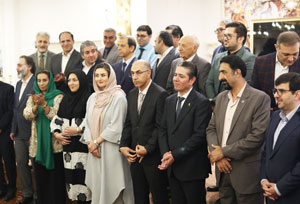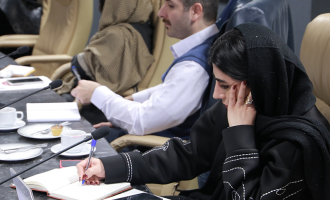Recent News
What is the product strategy?
Strategic planning and its types
Value creation in business
Contact us
- No.51, North Sohrawardi Iran
- international@mahanbs.com
- +982188401313

Are good leaders born or made? The true answer seems to be a mixture of both. While some people have intrinsic personality traits that make them natural leaders, learning how to develop leadership skills will help you add value and make you a better leader.
What is leadership?
Leadership is the ability of an individual or a group of people to influence and guide followers or members of an organization, society or team. Leadership often is an attribute tied to a person’s title, seniority or ranking in a hierarchy. However, it’s an attribute anyone can have or attain, even those without leadership positions. It’s a developable skill that can be improved over time. Leaders are found and required in most aspects of society, including business, politics, religion and social- and community-based organizations. Leaders are seen as people who make sound and sometimes difficult decisions. They articulate a clear vision, establish achievable goals and provide followers with the knowledge and tools necessary to achieve those goals. An effective leader has the following characteristics: self-confidence, strong communication and management skills, creative and innovative thinking, perseverance, willingness to take risks, open to change, levelheaded and reactiveness in times of crisis.
Why is leadership important?
Leadership plays a central role in the success and direction of a business. Organizations depend on successful leaders to communicate its mission, vision and goals, unite team members around those goals and then achieve them. These capabilities are especially important in times of crisis. Hard decision-making is often required for the success and evolution of a business. Businesses often depend on leaders with high competencies and emotional intelligence to make tough decisions and solve problems. This level of trust and success often leads to positive, productive work environments that encourage teamwork, employee well-being and strong work cultures that are attractive to top talent. Strong leadership is critical to an organization’s competitiveness because it drives change and innovation. The best leaders keep an eye on changing directions in their industry, promote new ideas from within their company and bring in innovative thinkers.
Leadership vs. management
The terms leadership and management are used interchangeably, but they aren’t the same concept. Leadership roles involve creating and articulating a vision and inspiring others to want to work toward that vision. But leaders might not be skilled at or involved with the day-to-day management of the work needed to turn that vision into a reality.
Management is the oversight of the tactical steps required to complete the work and achieve the objectives. Good managers excel at articulating the steps required to complete tasks and holding people accountable for doing assigned work. Leaders can be good managers and good managers can be good leaders. Very often, managers are put into positions where they need to exhibit leadership characteristics, such as motivating and aligning employees to goals. Likewise, leaders often must take on management tasks, such as holding employees accountable for an organization’s goals and vision.
Some specific differences between leaders and managers include the following:
| Leaders | Managers |
Establish a long-term vision, goals and objectives | Achieve organization’s vision, goals and objectives |
Motivate and align employees to goals | Assign tasks to employees and hold them accountable |
Ask long-term, big picture analytical questions, such as “what” and “why” | Ask process questions focused on achieving short-term objectives, such as “how” and “when” |
Can have any title, though often part of the C-suite; their positions and responsibilities aren’t always executive | Have specific job titles and fixed responsibilities |
What makes a great leader?
Several attributes separate good leadership from great leadership, including the following:
- Strong, realistic visions.
- Clear and effective communication.
- Adaptability, flexibility and creativity.
- Honesty.
- Patience.
- Resiliency.
- Emotional intelligence and empathy.
- Integrity.
- Collaboration.
- Passion.
- Fairness.
- Cultural awareness.
- Intelligence and expertise.
- Strategic and visionary decision-making.
- Persuade, motivate, empower and inspire.
Great leaders inspire people, motivating them to do what it takes to achieve the leader’s and organization’s goals.









